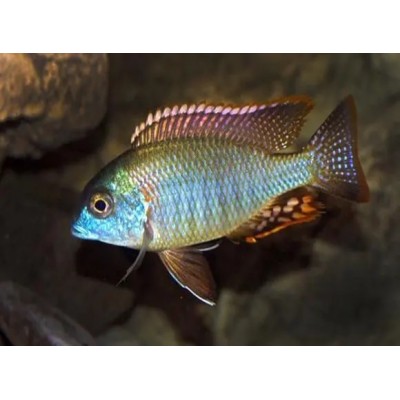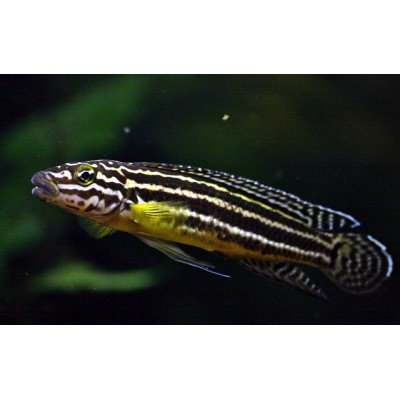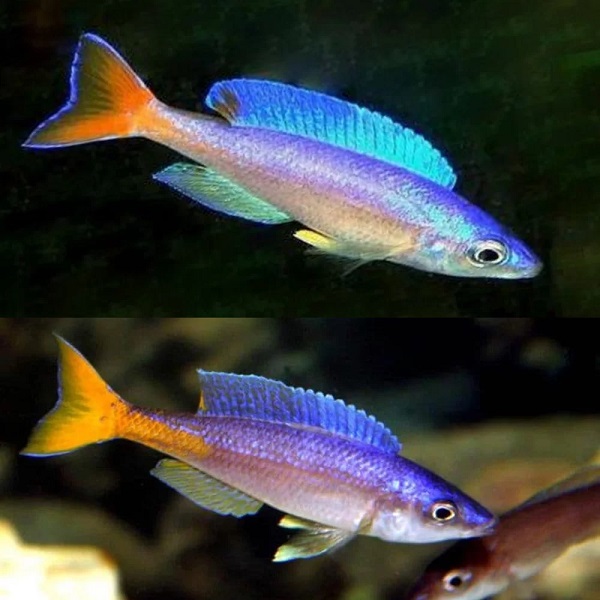
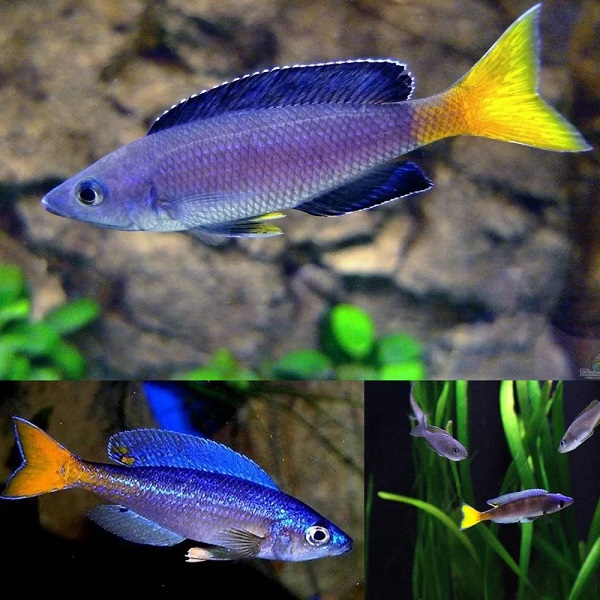


The Sardine Cichlid Cyprichromis leptosoma is a small elongated cichlid from Lake Tanganyika, Africa. Typically cichlids have a robust look with many being very deep bodied, but not the cichlids from the Cyprichromis genus. There are 5 species in this genus with a long slender streamlined form. They look more like sardines so are commonly known as Herring Cichlids or Sardine Cichlids. Common names for this fish are the Slender Cichlid or it may simply be referred to as “Cyp”, “Slender Cyp”, or “Lepto”.
This species is very colorful as well. Classic males range from browns to lavender blues accented with a tail fin that is golden to orangish yellow. However there are several slightly different color pattern variations and all are very attractive. They will differ in color patterns with contrasting lines and various shadings depending upon the location in Lake Tanganyika where the specimen is collected. Patterns span from dark vertical bars on top of a blue or lavender body to blotches of yellow.
Several common names are used to describe this pretty fish by its appearance. The most common is the Blue Flash Cichlid or Cyprichromis leptosoma “Blue Flash”. Others include “Neonback” or Cyprichromis leptosoma “Utinta”, Fluorescent Utinta, Cyprichromis leptosoma “Livua Blue Cichlid”, Blue Glitter, Black Bee, Neon Head, Neon Back, Livua Blue Cichlid, and more along with varieties being named for their place of origin in the lake. The Sardine Cichlid is the smallest of the Cyprichromis genus, reaching only up to about 4 1/3 inches (11 cm) in length. It is similarly shaped to the Blue Neon Paracyprichromis nigripinnis, The differences found on the Slender Cichlid are the uniformity of its body color and its also much larger.
This is a schooling cichlid that’s fairly peaceful, but it will need a tank large enough to provide plenty of room for swimming. In the wild they shoal in groups numbering in the thousands, in the aquarium a minimum of 12 is suggested for them to be comfortable. They tolerate their own species well. A good balance of three to four males with the being rest females will encourage the males to color up quite nicely.
These cichlids are not overly aggressive and enjoy schooling with a group of conspecifics. In contrast to that activity, at times they have an amusing “stand on the head” behavior or a behavior of being very still. These are some of the few fish that prefer the top areas of the tank, and so complement the middle and bottom dwellers. Keep them with other Tanganyika cichlids that are similar in temperament but inhabit the middle and lower regions of the tank. The presence of Sardine Cichlids in the tank actually calms other cichlids. When they see them out in the open, other cichlids figure it must be safe. Even your shell dwellers will spend more time out of their hiding places with these fish present.
This cichlid is a great choice for both the beginner and advance aquarist. It is easy to moderate to care for as long as regular water changes are done to keep water at optimal levels. This fish is always wanting to spawn, so provide some plants to provide cover for the newly hatched fry. It is important to keep conspecific varieties and similar species separate to help prevent hybrid strains from entering the trade, thus losing the true color forms.
- Species – Cyprichromis Leptosoma
- Common Name – Lepto, Sardine Cichlid
- Origin – Lake Tanganyika in Africa
- Diet – Carnivore
- PH Range – 7.8 – 9
- Temperature – Tropical 26°c – 27°c
- Breed Type – Egg Layer
- Max Size – approximately 11cm
NOTE : Please note that males under 4" may not show much color, but they typically develop a tremendous amount once they settle into their permanent tank.
- Stock: Out Of Stock
- Model: SARADINE CICHLID
- SKU: F2 IMPORTED


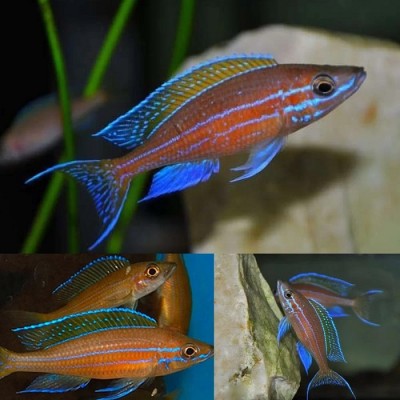
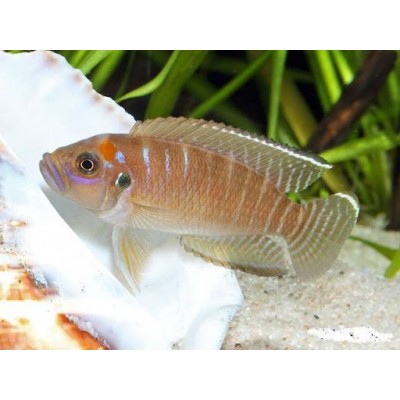


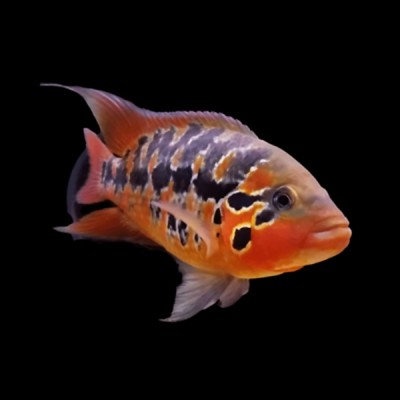
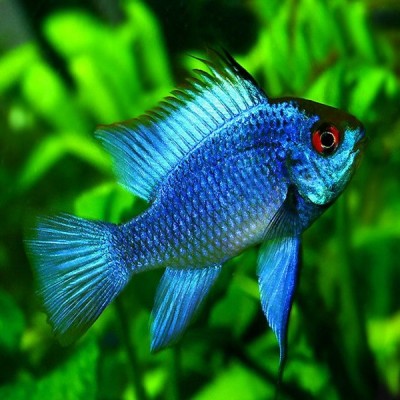
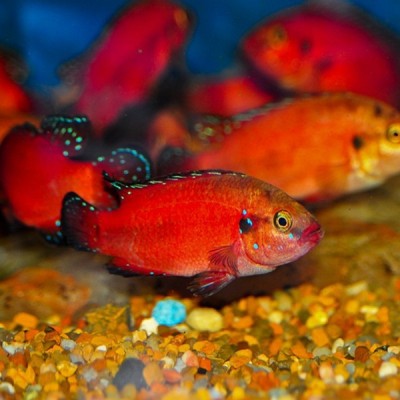
-400x400.jpg)
